Zone
Crash of a Piper PA-46-310P Malibu in Grand Rapids: 1 killed
Date & Time:
Jul 4, 2005 at 1758 LT
Registration:
N4386G
Survivors:
No
Schedule:
Grand Rapids – Minneapolis
MSN:
46-8508037
YOM:
1985
Crew on board:
1
Crew fatalities:
Pax on board:
0
Pax fatalities:
Other fatalities:
Total fatalities:
1
Aircraft flight hours:
1856
Circumstances:
The airplane was destroyed on impact with terrain during a forced landing following an observed in-flight loss of engine power after takeoff. A witness observed the takeoff and stated that the airplane took off from the end of runway 34. About halfway down the runway the airplane emitted a sound like a rapid misfire, a pop, and then no more audible engine sounds. The airplane was about 300 to 400 feet above ground level at that point. He said that the airplane turned right then turned left to a bank where the wing was straight down. The airplane's wings then leveled, the airplane descended, and it impacted terrain. He stated that the time from the sounds to the impact was about two to three seconds. An on-scene examination revealed no airframe pre-impact anomalies. An engine examination revealed a cracked crankshaft propeller flange. The engine without the turbochargers and with the original crankshaft was test run up to 2,100 RPM. A propeller and governor inspection revealed no anomalies. Examination of the turbocharger system's exhaust bypass valve assembly revealed its butterfly valve was stuck (bound) in the extended closed position. The engine's cracked crankshaft was removed and a serviceable crankshaft was installed. The engine was test run again with a serviceable exhaust bypass valve assembly. The engine produced rated power. The original exhaust bypass valve assembly was reinstalled. The exhaust bypass valve assembly's wastegate bound again during an engine run and a loss of engine power was observed. Sectioning of the bypass valve assembly revealed a bent wastegate shaft. The valve assembly lever arm was bent and exhibited pre-impact tool marks consistent with pliers loosening a bound wastegate shaft. The airplane's pilot operating handbook and Federal Aviation Administration (FAA) approved airplane flight manual (POH), in part, stated, "ENGINE POWER LOSS DURING TAKEOFF If sufficient runway remains for a normal landing, leave gear down and land straight ahead." The engine manufacturer's maintenance and operator's manual stated that the wastegate is required to be checked for operation and condition during 100 hour inspections. The manual did not specify a procedure for maintenance personnel on how to check the wastegate's operation and its acceptable condition. National Transportation Safety Board Recommendation A-94-081, issued to the FAA in 1994, stated, "Require the amendment of pilot operating handbooks and airplane flight manuals applicable to aircraft equipped with engine turbochargers by including in the 'Emergency Procedures' section information regarding turbocharger failure. The information should include procedures to minimize potential hazards relating to fire in flight and/or loss of engine power." The airplane's POH latest revision was dated October 14, 2002 and review of the emergency procedures section showed that the POH did not contain information, procedures, or amplified procedures on turbocharger failures. The airplane accumulated 8.7 hours of operation since the last annual inspection.
Probable cause:
An observed loss of engine power due to the bound/jammed turbocharger wastegate during takeoff, the pilot not maintaining airplane control, and the stall he inadvertently encountered. A factor was the maintenance personnel not replacing the turbocharger wastegate bypass valve assembly during the last annual inspection 8.7 hours of operation prior to the accident. An additional factor was the manufacturer's insufficiently defined inspection conditions for the bypass valve's proper operation.
Final Report:
Ground accident of a Douglas DC-9-51 in Minneapolis
Date & Time:
May 10, 2005 at 1936 LT
Registration:
N763NC
Survivors:
Yes
Schedule:
Columbus - Minneapolis
MSN:
47716/822
YOM:
1976
Flight number:
NW1495
Crew on board:
5
Crew fatalities:
Pax on board:
94
Pax fatalities:
Other fatalities:
Total fatalities:
0
Captain / Total hours on type:
6709.00
Copilot / Total hours on type:
3985
Aircraft flight hours:
67268
Aircraft flight cycles:
66998
Circumstances:
The DC-9 was taxiing to the gate area when it collided with a company A319 that was being pushed back from the gate. Prior to arriving at the destination airport, the DC-9 experienced a loss of hydraulic fluid from a fractured rudder shutoff valve located in the DC-9's right side hydraulic system. The left side hydraulic system had normal hydraulic pressure and quantity throughout the flight. The flightcrew elected to continue to the scheduled destination and declared an emergency while on approach to the destination airport. After landing, the emergency was negated by the flight crew and the airplane taxied to the gate. Flight data recorder information indicates the left engine, which provides power for the left hydraulic system, was shut down during taxi. The captain stated he did not remember shutting the left engine down, and that if he had, it would have been after clearing all runways. The first officer stated that he was unaware that the left engine was shut down. Upon arrival at the gate with the left engine shut down and no hydraulic pressure from the left system and a failure of the right hydraulic system, the airplane experienced a loss of steering and a loss of brakes. The flightcrew requested company maintenance to chock the airplane since they were unable to use brakes to stop the airplane. The crew said they were going to keep the "...engines running in case we have to use reversers..." The airplane began to roll forward and the captain applied reverse thrust but the reversers did not deploy. The airplane impacted the A319 with a speed of approximately 15.65 miles per hour to 16.34 miles per hour. Evacuation of the DC-9 was completed approximately 5:22 minutes after the collision and evacuation of the A319 occurred approximately 13:08 minutes after the collision. Examination of the left hydraulic system revealed no anomalies and examination of the right hydraulic system revealed a fractured rudder shutoff valve that displayed features consistent with fatigue. Following the accident, the airplane manufacturer issued a service letter pertaining to the replacement of the rudder shutoff valve based upon reliability information that was reported to them. The number of reports was greater than that of the Federal Aviation Administration's Service Difficulty Reports database, and less than the operators records.
Probable cause:
The Captain's decision to shutdown the left engine during taxi with no hydraulic pressure on the right side hydraulic system to effectively operate the brakes, steering, or thrust reversers. A factor was the fatigue fracture of the rudder shutoff valve which resulted in the loss of right side hydraulic pressure.
Final Report:
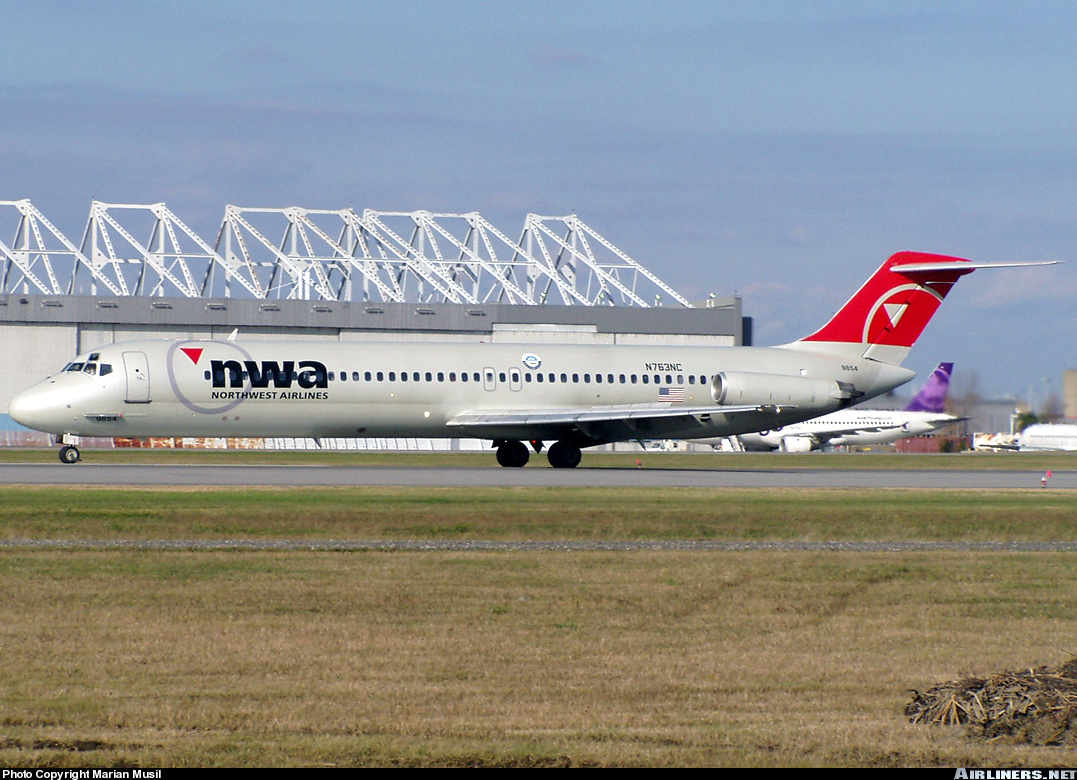
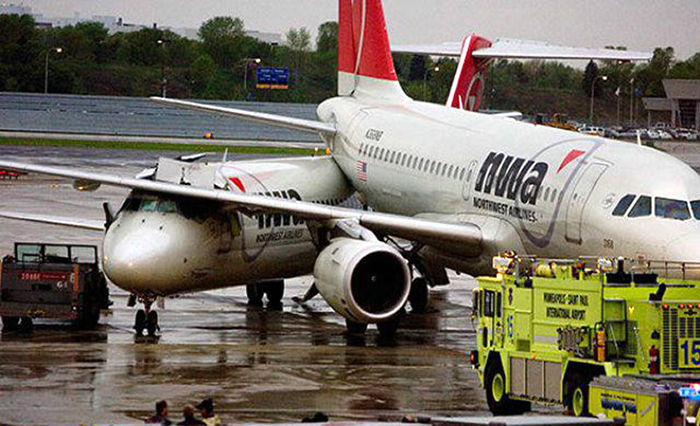
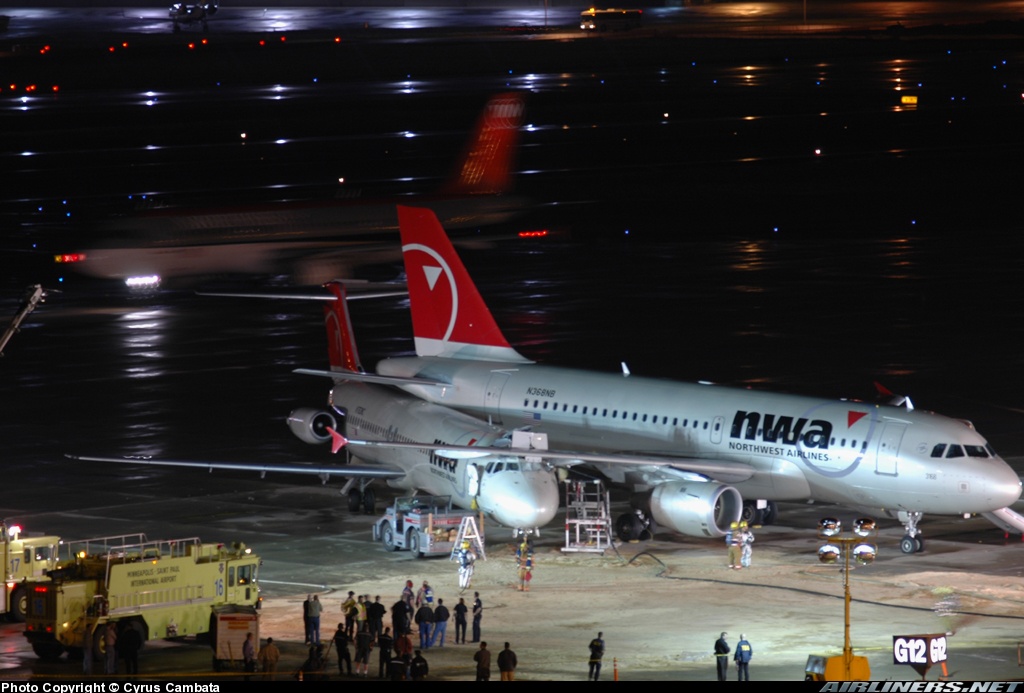
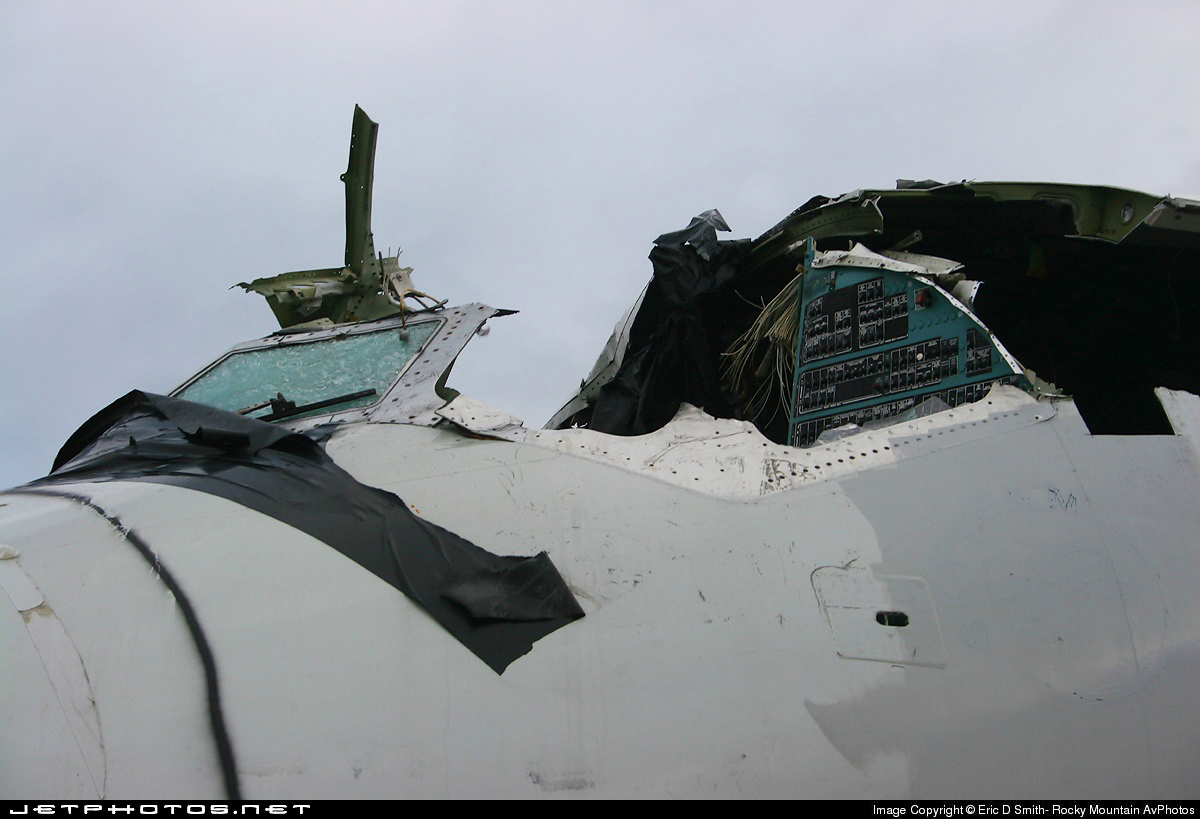
Crash of a Canadair RegionalJet CRJ-200LR in Jefferson City: 2 killed
Date & Time:
Oct 14, 2004 at 2215 LT
Registration:
N8396A
Survivors:
No
Schedule:
Little Rock – Minneapolis
MSN:
7396
YOM:
2000
Flight number:
NW3701
Crew on board:
2
Crew fatalities:
Pax on board:
0
Pax fatalities:
Other fatalities:
Total fatalities:
2
Captain / Total hours on type:
973.00
Copilot / Total hours on type:
222
Aircraft flight hours:
10168
Aircraft flight cycles:
9613
Circumstances:
On October 14, 2004, about 2215:06 central daylight time, Pinnacle Airlines flight 3701 (doing business as Northwest Airlink), a Bombardier CL-600-2B19, N8396A, crashed into a residential area about 2.5 miles south of Jefferson City Memorial Airport, Jefferson City, Missouri. The airplane was on a repositioning flight from Little Rock National Airport, Little Rock, Arkansas, to Minneapolis-St. Paul International Airport, Minneapolis, Minnesota. During the flight, both engines flamed out after a pilot-induced aerodynamic stall and were unable to be restarted. The captain and the first officer were killed, and the airplane was destroyed. No one on the ground was injured.
Probable cause:
The National Transportation Safety Board determines that the probable causes of this accident were:
1) the pilots' unprofessional behavior, deviation from standard operating procedures, and poor airmanship, which resulted in an in-flight emergency from which they were unable to recover, in part because of the pilots' inadequate training;
2) the pilots' failure to prepare for an emergency landing in a timely manner, including communicating with air traffic controllers immediately after the emergency about the loss of both engines and the availability of landing sites; and
3) the pilots' failure to achieve and maintain the target airspeed in the double engine failure checklist, which caused the engine cores to stop rotating and resulted in the core lock engine condition.
Contributing to this accident were:
1) the engine core lock condition, which prevented at least one engine from being restarted, and
2) the airplane flight manuals that did not communicate to pilots the importance of maintaining a minimum airspeed to keep the engine cores rotating.
1) the pilots' unprofessional behavior, deviation from standard operating procedures, and poor airmanship, which resulted in an in-flight emergency from which they were unable to recover, in part because of the pilots' inadequate training;
2) the pilots' failure to prepare for an emergency landing in a timely manner, including communicating with air traffic controllers immediately after the emergency about the loss of both engines and the availability of landing sites; and
3) the pilots' failure to achieve and maintain the target airspeed in the double engine failure checklist, which caused the engine cores to stop rotating and resulted in the core lock engine condition.
Contributing to this accident were:
1) the engine core lock condition, which prevented at least one engine from being restarted, and
2) the airplane flight manuals that did not communicate to pilots the importance of maintaining a minimum airspeed to keep the engine cores rotating.
Final Report:
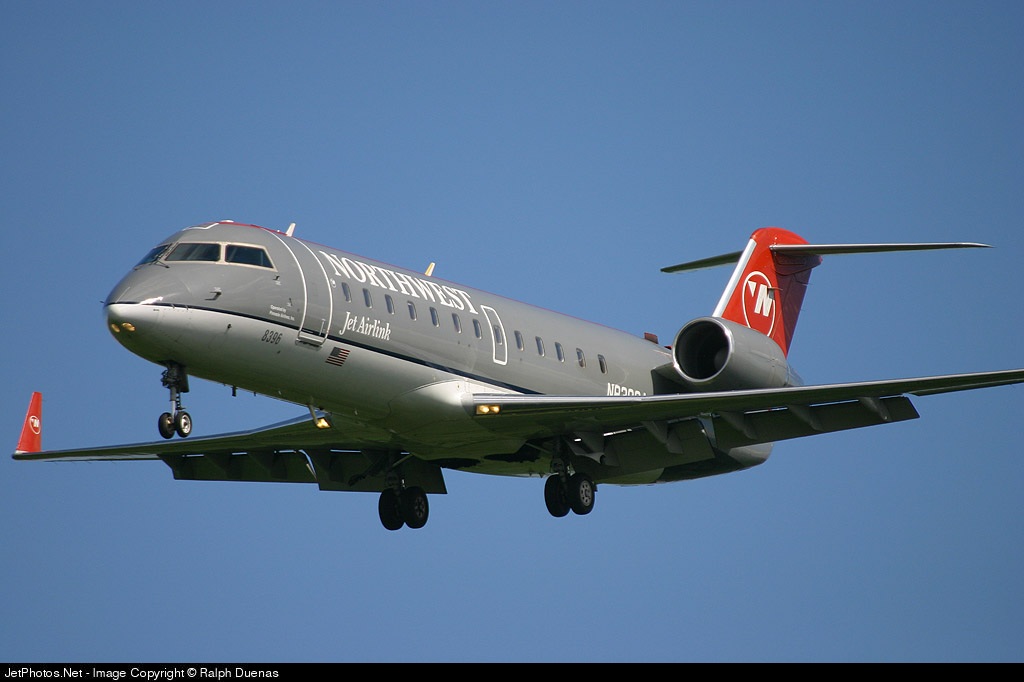
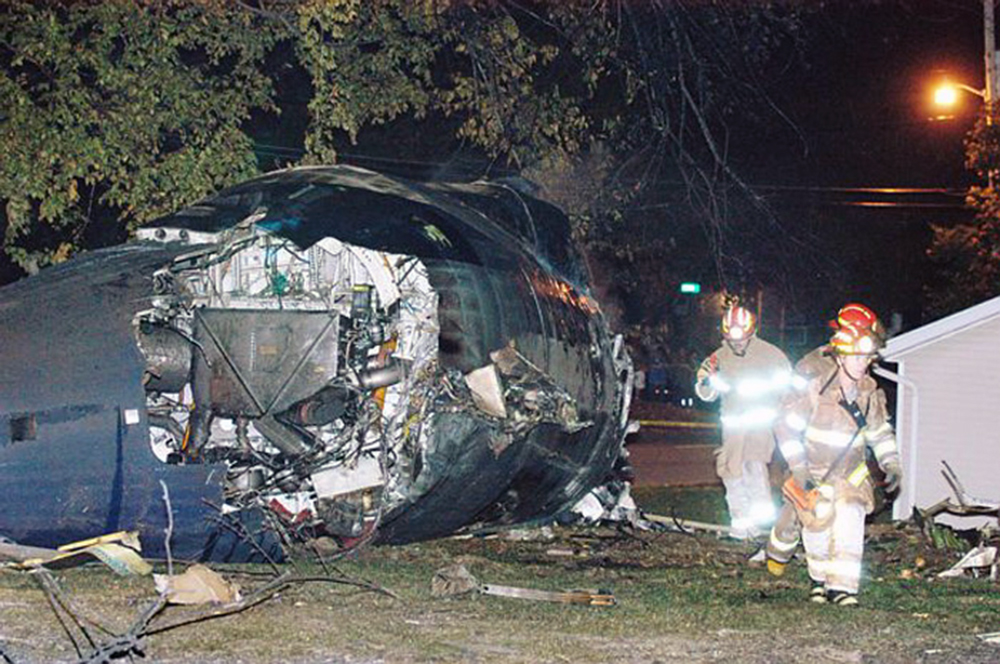
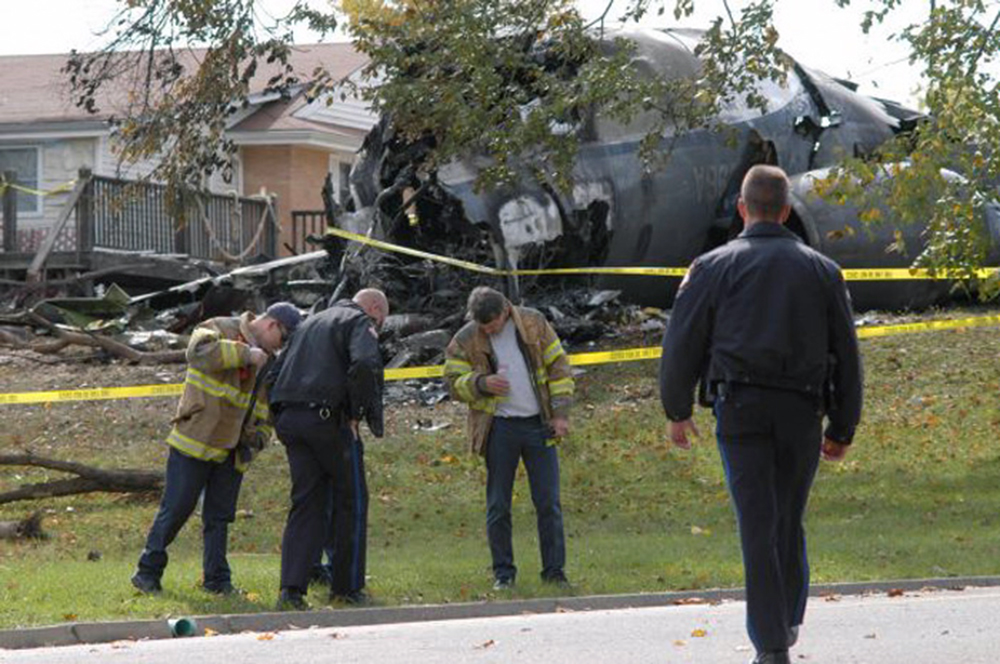
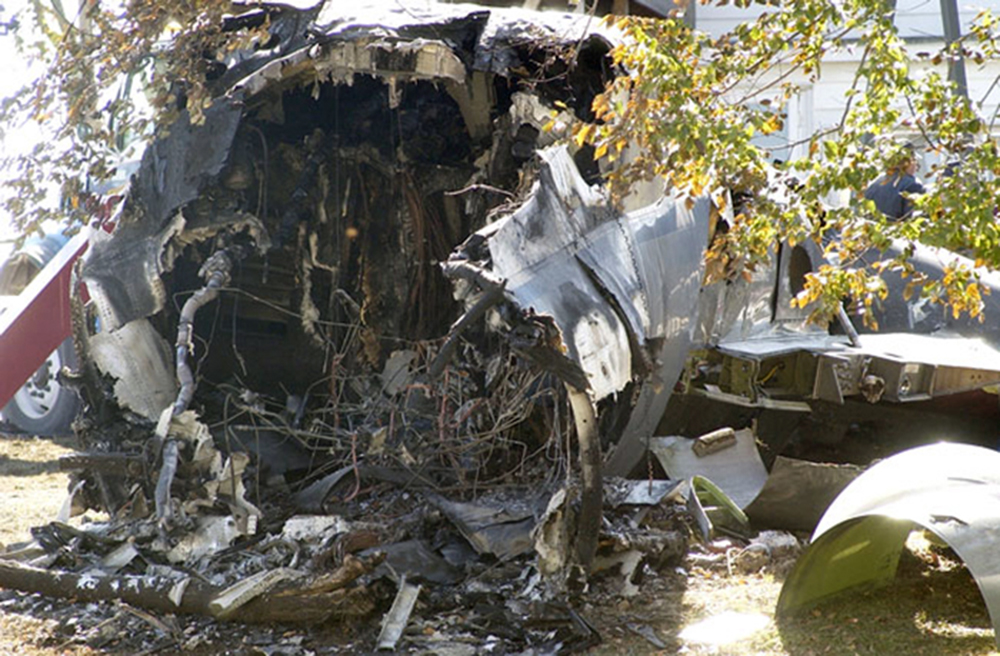
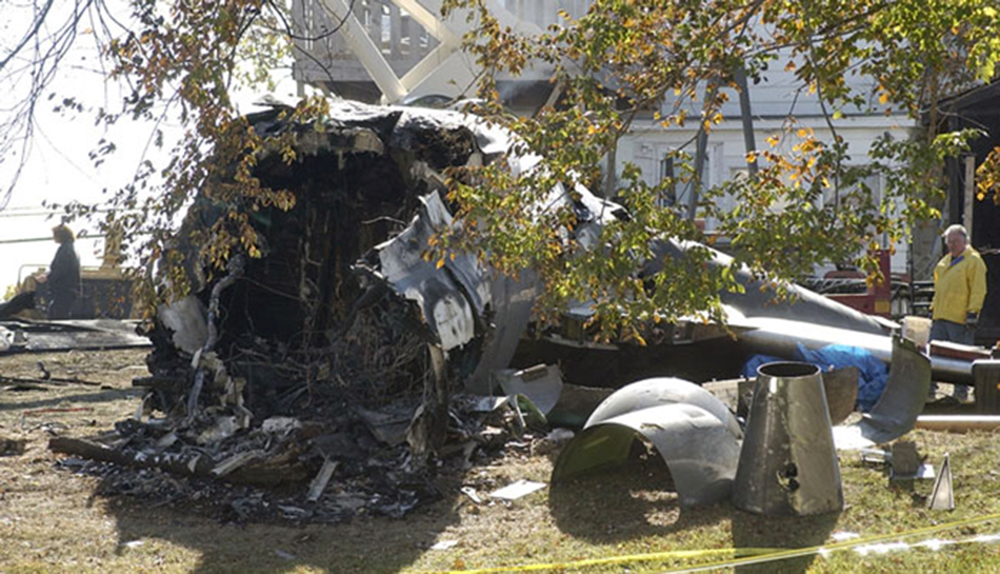
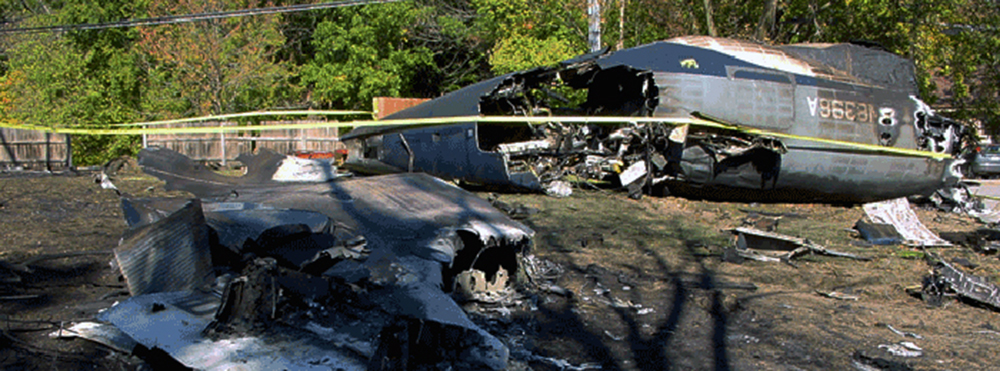
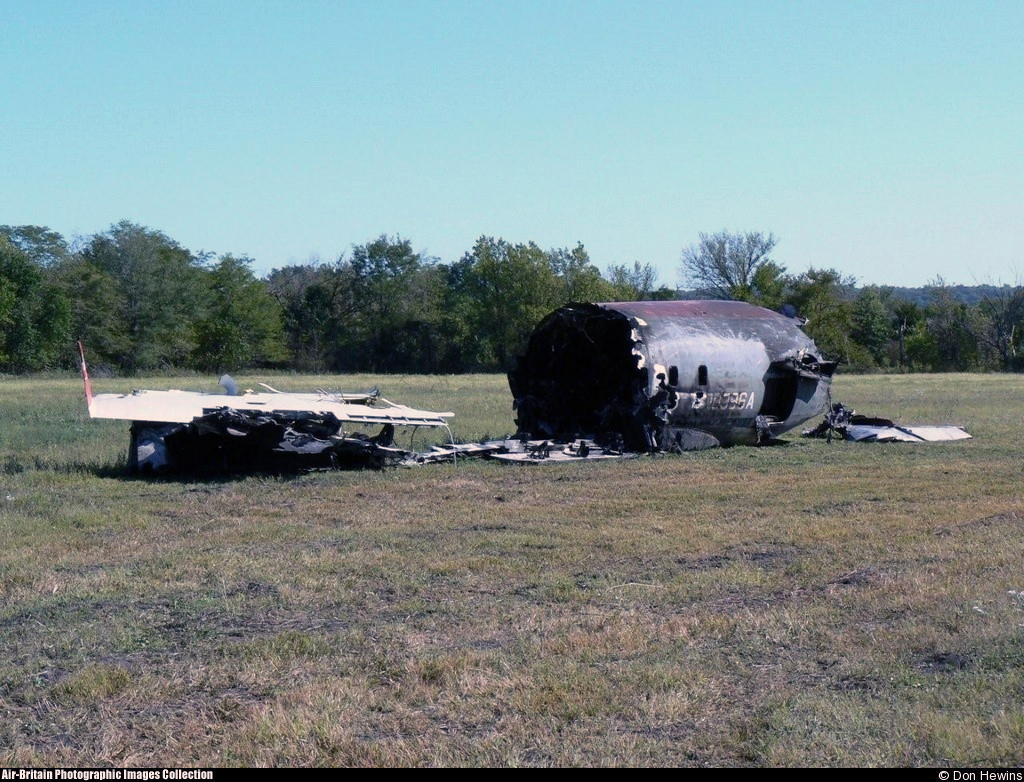
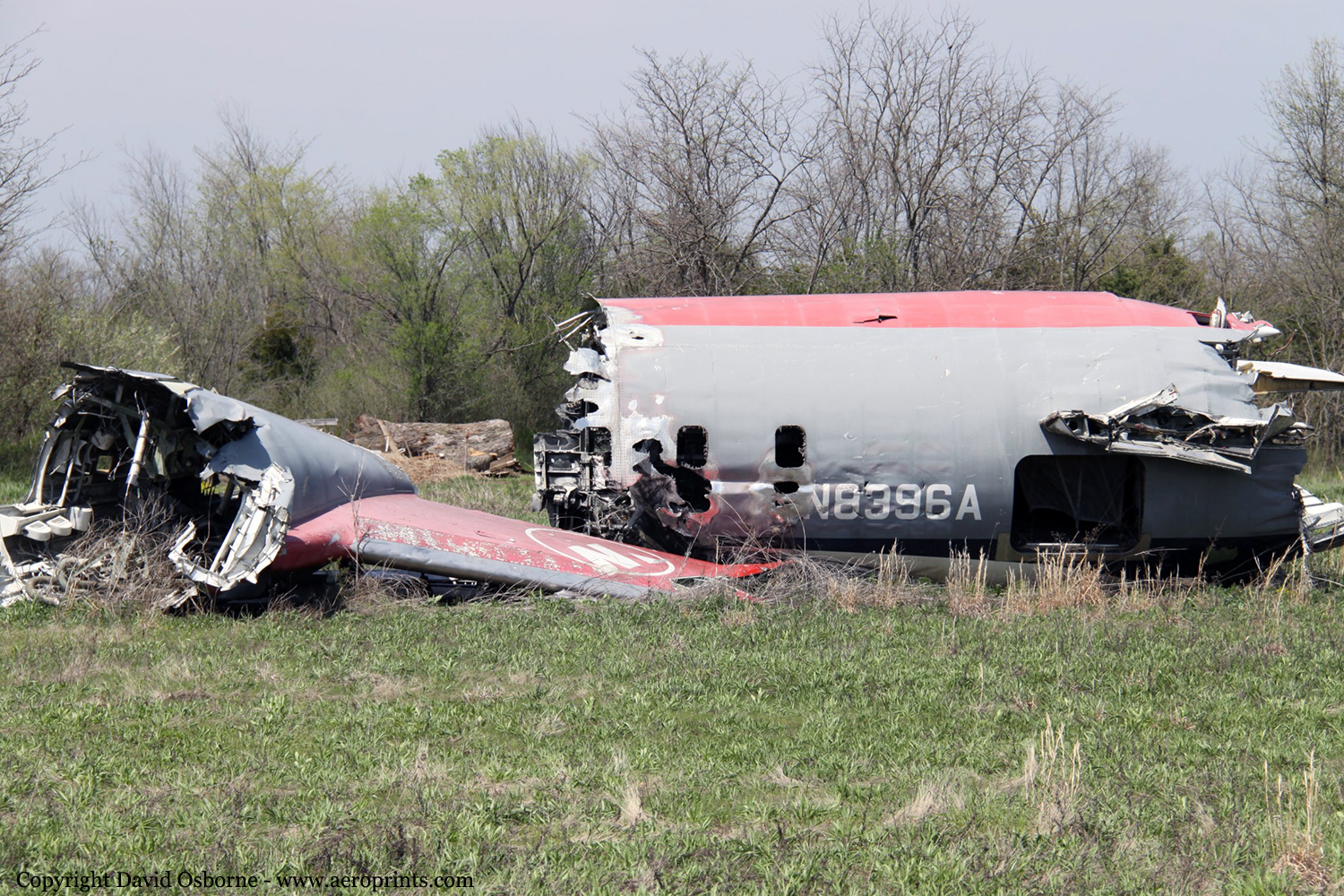
Crash of a Cessna 208B Super Cargomaster in Alma: 1 killed
Date & Time:
Mar 15, 2002 at 0200 LT
Registration:
N228PA
Survivors:
No
Schedule:
Minneapolis - Detroit
MSN:
208B-0049
YOM:
1987
Crew on board:
1
Crew fatalities:
Pax on board:
0
Pax fatalities:
Other fatalities:
Total fatalities:
1
Captain / Total hours on type:
1500.00
Aircraft flight hours:
9942
Circumstances:
The pilot departed with the airplane contaminated with ice, into known severe icing conditions, and was unable to maintain altitude, subsequently impacting trees and terrain. Witnesses reported the accident airplane arrived at the departure airport contaminated with ice. Several witnesses stated they asked the pilot if he needed the airplane deiced prior to his next departure and the pilot stated he did not need any deice service. Several witnesses said they noticed the pilot chipping-off ice from the airplane prior to his departure. While en route the pilot reported the airplane had encountered icing conditions and he was unable to maintain altitude. Several thick pieces of ice were recovered around the accident site and one of the recovered ice pieces had a semicircular shaped edge that was consistent with a leading edge of an airfoil. No pre-impact anomalies were found with the leading edge de-ice boots that were installed on both wings, vertical and horizontal stabilizers, and wing struts. Federal Aviation Regulations state that all ice contamination shall be removed prior to flight. The Cessna 208B Pilot Operating Handbook indicates that continued flight into known icing conditions must be avoided.
Probable cause:
The pilot not removing the ice contamination from the airplane prior to departure and the pilot intentionally flying into known severe icing conditions, resulting in the aircraft not being able to maintain altitude/clearance from the terrain. Factors to the accident included the icing conditions and the trees encountered during the forced landing.
Final Report:
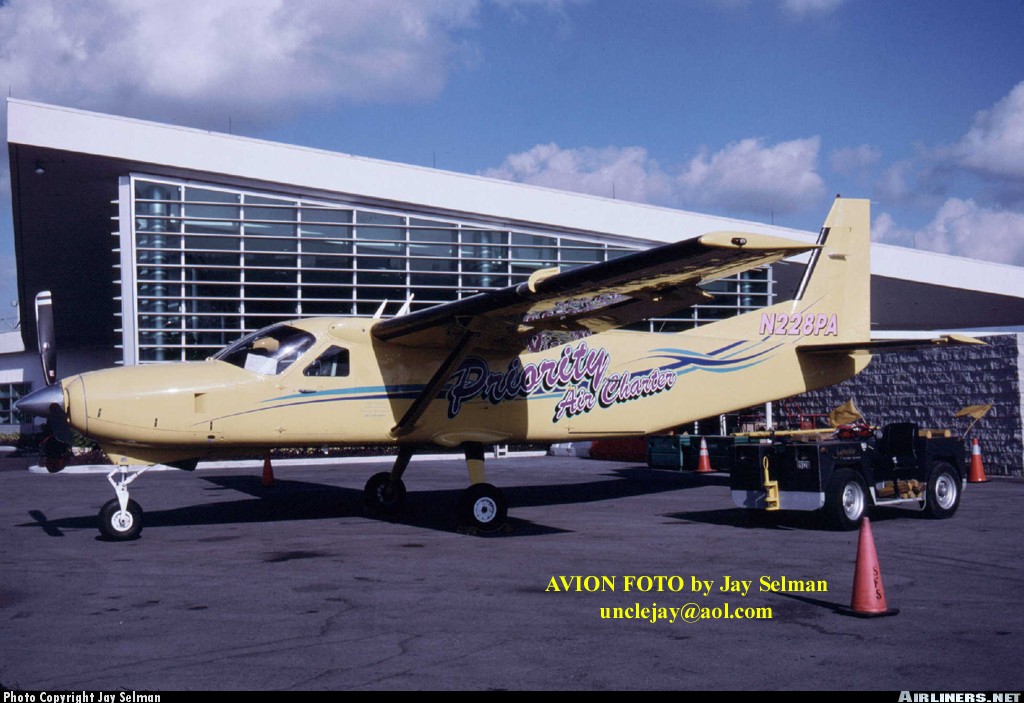
Crash of a Beechcraft E18S in Lake Elmo
Date & Time:
Oct 2, 1997 at 0605 LT
Registration:
N916TM
Survivors:
Yes
Schedule:
Lake Elmo - Minneapolis
MSN:
BA-337
YOM:
1958
Crew on board:
1
Crew fatalities:
Pax on board:
1
Pax fatalities:
Other fatalities:
Total fatalities:
0
Captain / Total hours on type:
350.00
Aircraft flight hours:
10530
Circumstances:
The pilot reported that the airplane lifted off at 70 knots. After accelerating in ground effect the airplane became 'unstable in the roll axis' so he added power. He reported that the left wing tip contacted the runway approximately 3/4 the way down the runway. The pilot then added additional power at which point the left wing contacted the grass off the left side of the departure end of the runway. The pilot then reduced the power to idle and landed the airplane in the grass collapsing the landing gear. The pilot reported that the engines sounded normal throughout the accident sequence. Investigation revealed another Beech 18 had taken off on the same runway, but in the opposite direction of N916TM less than one minute prior to the accident.
Probable cause:
The pilot's failure identify the unsafe condition (vortex turbulence) which existed due to departing airplane and his subsequent inability to control the airplane once encountering the turbulence.
Final Report:

Crash of a Piper PA-61-601P (Ted Smith 601) in Eagle County: 5 killed
Date & Time:
Nov 17, 1996 at 1505 LT
Registration:
N251B
Survivors:
No
Schedule:
Eagle County – Minneapolis
MSN:
61-0812-8063422
YOM:
1980
Crew on board:
1
Crew fatalities:
Pax on board:
4
Pax fatalities:
Other fatalities:
Total fatalities:
5
Captain / Total hours on type:
16.00
Circumstances:
The non instrument-rated pilot filed an IFR flight plan, but did not request nor was given a weather briefing. Shortly after taking off into low instrument meteorological conditions, he reported he was returning to the airport, but did not give a reason why. He never declared an emergency. The last transmission was when the pilot said he had 'the problem resolved,' and was continuing on to his destination. Various witnesses said the engines were 'revvying' and 'unsynchronized,' and that the propellers were being 'cycled.' One witness said brownish-black smoke trailed from the right engine. The airplane struck one ridge, then catapulted approximately 1,000 feet before striking another ridge. There was post impact fire. Both propellers bore high rotational damage. Disassembly of the engines, propellers, turbochargers, and various components failed to disclose what may have prompted the pilot to want to return to the airport. Internal components of the right engine, however, were black and, according to a Textron Lycoming representative, were indicative of 'an excessively rich mixture.' A psychiatrist had recently treated the pilot for depression, attention deficit and bipolar disorders. The pilot also had a history of alcohol and drug abuse. Postmortem toxicology protocol disclose the presence of Fluoxetine (an antidepressant), Norfluoxetine (its metabolite), and Hydrocodone (the most commonly prescribed opiate).
Probable cause:
The pilot initiating flight into known adverse weather conditions without proper certification. Factors were the meteorological conditions that existed --- low ceiling, low visibility, and falling
snow --- and his use of contraindicated drugs.
snow --- and his use of contraindicated drugs.
Final Report:
Crash of a BAe 3101 Jetstream 31 in Hibbing: 18 killed
Date & Time:
Dec 1, 1993 at 1950 LT
Registration:
N334PX
Survivors:
No
Schedule:
Minneapolis - Hibbing
MSN:
706
YOM:
1986
Flight number:
NW5719
Crew on board:
2
Crew fatalities:
Pax on board:
16
Pax fatalities:
Other fatalities:
Total fatalities:
18
Captain / Total hours on type:
2266.00
Copilot / Total hours on type:
65
Aircraft flight hours:
17156
Aircraft flight cycles:
21593
Circumstances:
While on a localizer back course approach the airplane collided with trees and the terrain approximately 3 miles from the runway threshold. The captain delayed the start of the descent that subsequently required an excessive descent rate to reach the FAF and MDH. The captain's actions led to distractions during critical phases of the approach. The flightcrew lost altitude awareness and allowed the airplane to descend below mandatory level off points. The captain's record raised questions about his airmanship and behavior that suggested a lack of crew coordination during flight operations, including intimidation of first officers. Company management did not address these matters adequately. The airline's flight operations management failed to implement provisions to adequately oversee the training of their flight crews and the operation of their aircraft. FAA guidance to their inspectors concerning implementation of ops bulletins is inadequate and has failed to transmit valuable safety information as intended to airlines. The aircraft was totally destroyed and all 18 occupants were killed.
Probable cause:
The captain's actions that led to a breakdown in crew coordination and the loss of altitude awareness by the flight crew during an unstabilized approach in night instrument meteorological conditions. Contributing to the accident were: the failure of the company management to adequately address the previously identified deficiencies in airmanship and crew resource management of the captain; the failure of the company to identify and correct a widespread, unapproved practice during instrument approach procedures; and the Federal Aviation Administration's inadequate surveillance and oversight of the air carrier.
Final Report:
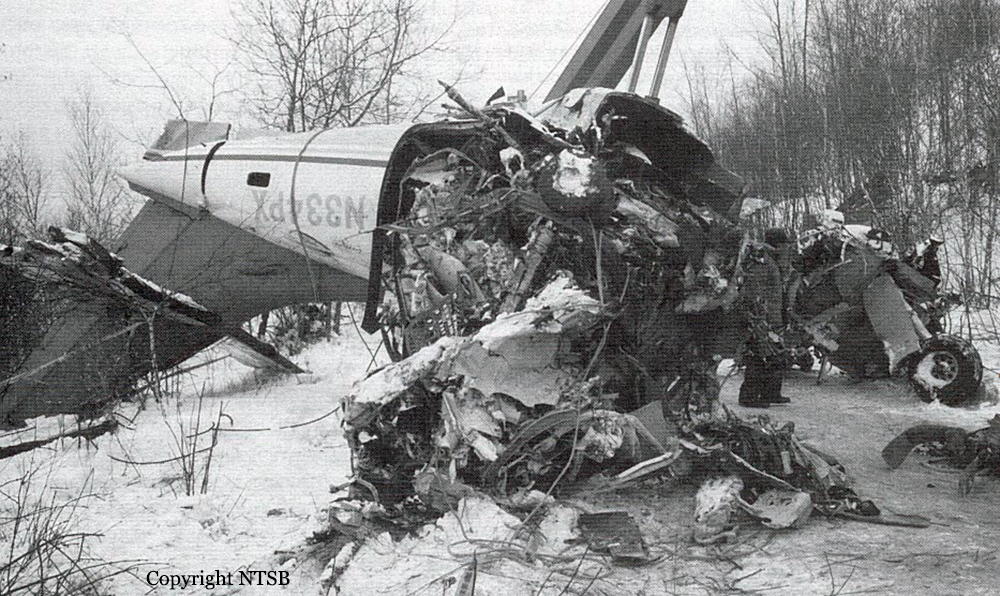
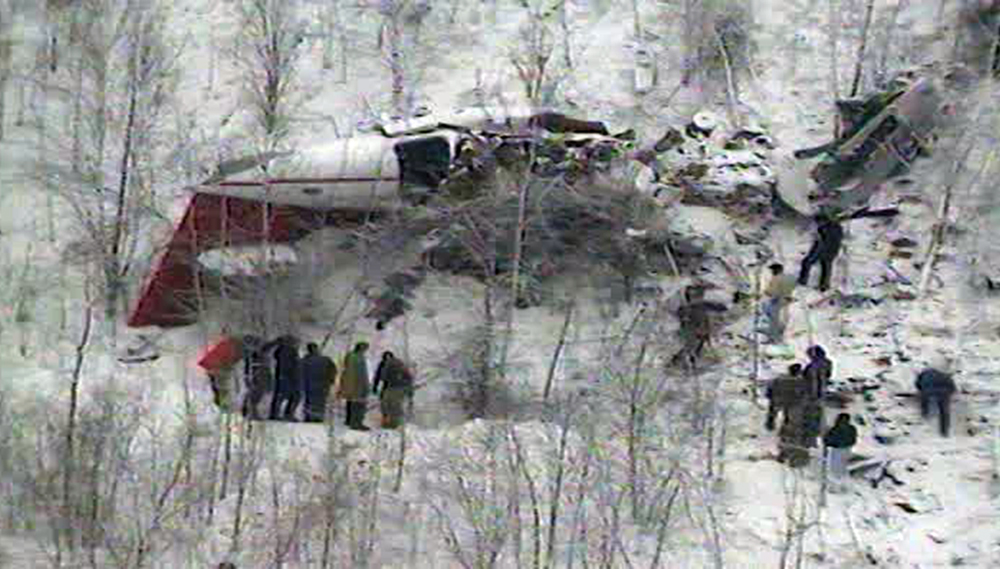
Crash of a Beechcraft E18S in Lone Rock: 1 killed
Date & Time:
May 4, 1993 at 0140 LT
Registration:
N80CB
Survivors:
No
Schedule:
Aurora - Minneapolis
MSN:
BA-257
YOM:
1957
Crew on board:
1
Crew fatalities:
Pax on board:
0
Pax fatalities:
Other fatalities:
Total fatalities:
1
Captain / Total hours on type:
310.00
Aircraft flight hours:
15027
Circumstances:
The pilot of a twin-engine cargo airplane shut down the left engine and feathered the propeller due to a loss of engine oil. The FAA ARTCC handling the flight vectored the airplane toward a VOR. Due to the airplane's altitude and distance from the center's radar, the pilot of the airplane had to perform a full instrument approach procedure. The airplane maintained its enroute assigned altitude until passing the VOR outbound. Ntap readouts show the airplane descending throughout the procedure turn and inbound leg of the approach. The airplane's last radar contact was 300 feet below the inbound altitude for the approach while outside the final approach fix. The airplane collided with trees and terrain approximately 2 1/4 miles from the airport. The VOR is 5.5 miles from the airport. The on-scene investigation revealed the left engine's propeller had been feathered, its number nine cylinder mounting studs on the engine's case were crushed downward or were broken off at the case's surface, and the landing gear had been extended. The pilot, sole on board, was killed.
Probable cause:
The National Transportation Safety Board determines the probable cause(s) of this accident to be: was a pre-mature extension of the landing gear by the pilot which resulted in the inability of
the pilot to maintain the minimum descent altitude. Factors related to the accident were the loose cylinder and loss of oil.
the pilot to maintain the minimum descent altitude. Factors related to the accident were the loose cylinder and loss of oil.
Final Report:



